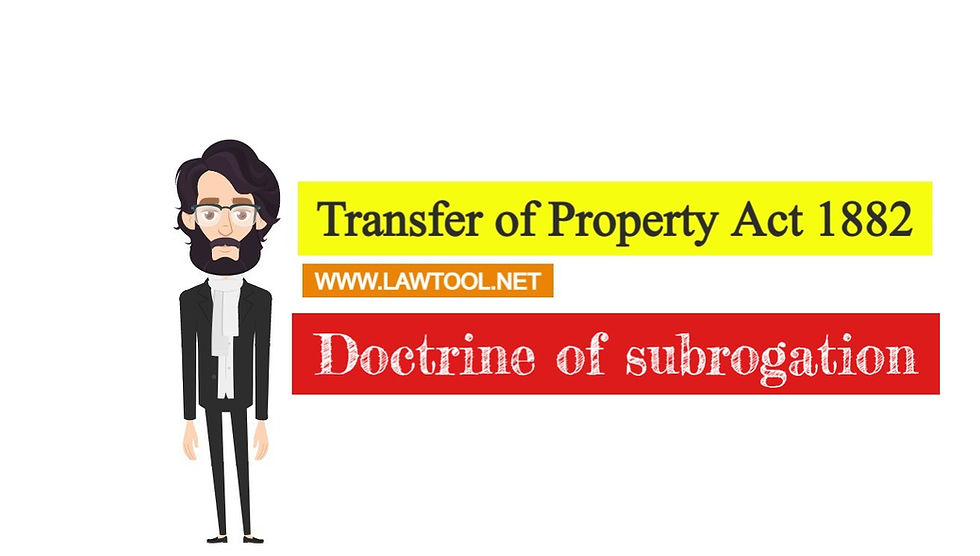Doctrine of subrogation
Subrogation / प्रस्थापन ( HINDI)
Subrogation means substitution. The doctrine of subrogation enables a person to stand in the shoes of a creditor whom he has paid off a claim to be entitled to all the remedies open to that creditor in respect of securities held by him. In other words, where the rights of subrogation exist, the discharged incumbrance is treated as kept alive and its benefit transferred to the subrogee, i.e., the person who has paid it off. Reason for recognition of the doctrine of subrogation: If a person advancing money to pay off an incumbrance is not subrogated to the rights and remedies of the discharged creditor, subsequent incumbrancers gain -priority to his detriment. The discharge of a charge on the estate by a tenant for life would operate as a gift to those in remainder unless the discharged incumbrance is preserved and kept on foot for his benefit.
The doctrine of subrogation, which obviates such hardships, is founded in great equity. Legal and conventional subrogation: When the substitution of one creditor for another takes place by agreement or act or parties, the subrogation is designated conventional or consensual. Apart from and independently of agreement between the parties, on principles of equity and justice, a person who discharges a mortgage debt is given, in certain circumstances, the benefit of the security discharged by him. Such substitution of creditors by operation of law is generally known as legal subrogation.
If a person who has an existing interest in the property by virtue of which he is entitled to redeem a mortgage on it, discharges the mortgage, a claim to legal subrogation may be sustained. In such a case no registered instrument is required to confer the right of subrogation. On the other hand where a person who has no interest in the property and so no right to redeem, advances money to the mortgagor for discharging a mortgage, the claim to subrogation can only be based on convention or agreement which is now required to be in writing and registered. Before section 92 was inserted by the amending Act of 1929, a claim to conventional subrogation could be based upon an express agreement and even that should be evidenced by a registered instrument. This is an important change effected
by the Act of 1929.
The last paragraph of section 92 makes it clear that there can be no claim to partial subrogation. That is, a claim to subrogation can be put forward only when the mortgage to which the claim relates has been fully discharged.
In view of the requirement of a registered document for the recognition of a claim to conventional subrogation, the question whether the section is retrospective assumes importance. Now it is an agreed position that section 92 as amended does not apply to transactions concluded before 1 April, 1930, which were the subject matter of suits pending on that date.27
"A volunteer" cannot claim subrogation: A volunteer is one who has paid the debt of another without obtaining any assignment of the debt from the creditor and without any agreement for subrogation with the debtor, and without having any rights of his own. When a person has a pre-existing interest in the property, he can redeem and claim legal subrogation. If there is an agreement (which from 1 April, 1930 should be by a registered instrument) for subrogation, he can claim conventional subrogation even though he may have no pre-existing interest in the property. In other cases he is only a volunteer and is not entitled to the equitable right of subrogation for "there is no equity in favour of a volunteer".



Comments